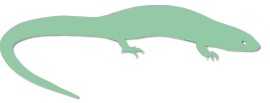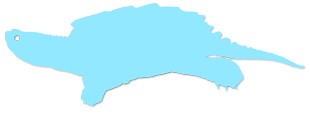Herp Bits:
Watch for turtles crossing roads in May and June, and again in September. In spring females can travel a long way from water, looking for suitable nest sites.
Males and females will move from one water body to another in spring, making the return trip in fall.
IF IT IS SAFE TO STOP you can help the critter on its way, moving it off the road in the direction it was headed!
The MHA Data Page
 Interactive Database
Interactive Database
The MHA website is no longer collecting new records. As of December, 2020, a total of 8,838 records have been submitted. A brief synopsis of the MHA data is below.
February 2021 Update: The MHA Interactive Database is no longer available. Google removed the Fusion Tables function and an appropriate data application could not be found. Final maps of the MHA records can be found at this link: The MHA data set is still available. Researchers wishing to obtain MHA data can submit an email request and data will be provided in spreadsheet format (see email link below). |
Accredited researchers may request access to a more detailed and downloadable MHA Database through this email link: Request Database Access.
Final Summary of MHA Data
 A total of 8,838 records were submitted to the MHA from 2011 to 2020. All 24 different species of reptiles and amphibians known to occur in Manitoba were recorded (Tables 1 and 2 below).
A total of 8,838 records were submitted to the MHA from 2011 to 2020. All 24 different species of reptiles and amphibians known to occur in Manitoba were recorded (Tables 1 and 2 below).
At least 186 different people submitted records to the MHA. The MHA website has received more than 168,000 page views. Media coverage of the project in included a number of print articles and several radio interviews. The MHA was successful in raising awareness of this component of Manitoba's biodiversity.
The MHA was, unfortunately, not able to engage many Manitobans from the northern regions of this province. The project simply did not have the resources or personnel to travel to this region to promote the project or support individuals wishing to become involved.
All MHA records were made available to Manitoba government biologists with the Conservation Data Centre. Six external researchers requested and were supplied with the data set. Hopefully, the data gathered in the MHA will help conservation efforts for Manitoba's biodiversity.
Records obtained through the MHA largely corroborated the known ranges of Manitoba's reptiles and amphibians, with a couple of notable exceptions. The 95 records of Mink Frog expanded the known range of this species by some 50 km within southeast Manitoba. The 43 records of Eastern Tiger Salamander represent a dramatic increase in the records of this species in Manitoba and contributed to determining the range of this species in southeastern Manitoba.
Table 1: Numbers of records by group and species.
Table 1 presents the MHA records by the group and individual species. Following Table 2 (below) is a brief discussion of the records.
| Amphibian/Reptile Name | # of Records | % of Total |
Frogs |
||
| Green Frog | 23 | 0.3% |
| Northern Leopard Frog | 1024 | 11.6% |
| Mink Frog | 95 | 1.1% |
| Wood Frog | 1075 | 12.2% |
Toads |
||
| American Toad | 186 | 2.1% |
| Canadian Toad | 146 | 1.7% |
| Great Plains Toad | 280 | 3.2% |
| Plains Spadefoot | 101 | 1.1% |
Treefrogs |
||
| Cope's Gray Treefrog | 220 | 2.5% |
| Gray Treefrog | 382 | 4.3% |
| Unidentified Treefrog | 63 | 0.7% |
| Spring Peeper | 233 | 2.6% |
| Boreal Chorus Frog | 2379 | 26.9% |
Salamanders |
||
| Blue-spotted Salamander | 62 | 0.7% |
| Barred Tiger Salamander | 120 | 1.4% |
| Eastern Tiger Salamander | 43 | 0.5% |
| Mudpuppy | 11 | 0.1% |
Snakes |
||
| Western Hognose Snake | 66 | 0.7% |
| Smooth Green Snake | 305 | 3.5% |
| Northern Red-bellied Snake | 182 | 2.1% |
| Plains Garter Snake | 441 | 5.0% |
| Eastern Garter Snake | 88 | 1.0% |
| Red-sided Garter Snake | 363 | 4.1% |
| Unidentified Garter Snake | 4 | 0.0% |
Turtles |
||
| Snapping Turtle | 119 | 1.3% |
| Western Painted Turtle | 251 | 2.8% |
Lizards |
||
| Northern Prairie Skink | 580 | 6.6% |
Table 2: Records by frequency
| # of Records | % of Total | |
| All Records | 8838 | 100.0% |
| Boreal Chorus Frog | 2379 | 26.9% |
| Wood Frog | 1075 | 12.2% |
| Northern Leopard Frog | 1024 | 11.6% |
| Northern Prairie Skink | 580 | 6.6% |
| Plains Garter Snake | 441 | 5.0% |
| Gray Treefrog | 382 | 4.3% |
| Red-sided Garter Snake | 363 | 4.1% |
| Smooth Green Snake | 305 | 3.5% |
| Great Plains Toad | 280 | 3.2% |
| Western Painted Turtle | 251 | 2.8% |
| Spring Peeper | 233 | 2.6% |
| Cope's Gray Treefrog | 220 | 2.5% |
| American Toad | 186 | 2.1% |
| Northern Red-bellied Snake | 182 | 2.1% |
| Canadian Toad | 146 | 1.7% |
| Barred Tiger Salamander | 120 | 1.4% |
| Snapping Turtle | 119 | 1.3% |
| Plains Spadefoot | 101 | 1.1% |
| Mink Frog | 95 | 1.1% |
| Eastern Garter Snake | 88 | 1.0% |
| Western Hognose Snake | 66 | 0.7% |
| Unidentified Treefrog | 63 | 0.7% |
| Blue-spotted Salamander | 62 | 0.7% |
| Eastern Tiger Salamander | 43 | 0.5% |
| Green Frog | 23 | 0.3% |
| Mudpuppy | 11 | 0.1% |
| Unidentified Garter Snake | 4 | 0.0% |
Discussion
All 24 species of reptiles and amphibians known to occur in Manitoba were recorded in the MHA. Three species of frogs (Boreal Chorus, Wood and Northern Leopard) account for 50% of all records submitted. Most of those records involve hearing the mating calls of these frogs. It's not surprising as these likely are the most common species of this group of animals and some of the easiest to identify by their calls.
The relatively high number of records for the endangered Northern Prairie Skink as well as some of the other more cryptic species from southwestern Manitoba reflects the high number of records submitted by researchers from Brandon University involved in intensive studies of these species.
Though the MHA website will no longer be collecting records it is hoped that data on Manitoba's reptiles and amphibians will continue to be gathered through Manitoba's Go Wild program (see links on the MHA Front Page).
For final maps of the MHA data please Click Here.
The author wishes to extend his personal thanks to all that helped make this project a success.
Sincerely,
Douglas R. Collicutt, Biologist
NatureNorth.com
Limitations on Data Availability
 NatureNorth is working in cooperation with Manitoba Conservation
on this project and there may be some instances where some of the information
collected won't be made available to everyone. After all, there may
be a need to protect sensitive areas and species at risk (SAR) in some
cases. Broadcasting the precise locations of endangered species or of major snake dens may not
be in the best interests of the critters. When such sensitive information
is collected it will be passed on to Manitoba Conservation and accredited researchers only. However, in such cases, we hope to be able to post generalized location information, while keeping geographically precise information confidential.
NatureNorth is working in cooperation with Manitoba Conservation
on this project and there may be some instances where some of the information
collected won't be made available to everyone. After all, there may
be a need to protect sensitive areas and species at risk (SAR) in some
cases. Broadcasting the precise locations of endangered species or of major snake dens may not
be in the best interests of the critters. When such sensitive information
is collected it will be passed on to Manitoba Conservation and accredited researchers only. However, in such cases, we hope to be able to post generalized location information, while keeping geographically precise information confidential.
Respect the Rights of Landowners
Please respect private property and the rights of landowners. Don't trespass on your herping safaris. Ask permission to go on to private land and to report any records from that land. We will respect the rights of landowners to not have herp locations posted if they choose.
You can help support the continuing operations of this citizen-science project. Every contribution makes a difference! |